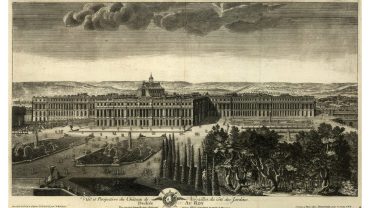From mind control to monsters, time travel to alternate dimensions, some things are purely the purview of science fiction. In fact, all of these and more are the subject of the hit supernatural thriller Stranger Things. But what if they were real? Because that very show was inspired by a story that claims them as fact. It’s a tale of secret government experiments conducted on stolen children, of vast ships bending the rules of time and space, and of the things usually found in nightmares. And it was called the Montauk Project.
So, was it a case of the truth being as strange as fiction? That’s what we’re here to determine, exploring its origins, claims, and the Montauk Stranger Things connection.
The Origins of the Montauk Conspiracy

Mind control concept illustration. (Credit: tatianazaets via Getty Images)
The legends surrounding Montauk came to popular attention in 1992, with the publication of The Montauk Project: Experiments in Time. This was the first of a series of books on the subject written by Preston Nichols and Peter Moon, which claimed to expose the secrets behind the Montauk experiments. They introduced the public to an intricate narrative of government cover-ups and otherworldly technologies. To understand these ideas however, it’s essential to first examine the connection with another infamous mystery known as the Philadelphia Experiment.
The Philadelphia Experiment

Warship goes through the rough Atlantic ( Photo: S_Bachstroem via iStock)
Allegedly conducted in 1943, this was said to be an attempt by the U.S. Navy to render the destroyer escort USS Eldridge invisible to enemy devices. The story goes that the test was partially successful, causing the ship to become invisible or “cloaked,” but with disastrous consequences for the crew on board, some of whom were rumoured to have suffered from severe physical and mental ailments as a result of the experiment. Some were even said to have materialised fused to the ship.
Proponents of the Montauk Project theory assert that the research into invisibility and manipulation of space-time didn’t end with the Philadelphia Experiment but instead laid the groundwork for the more advanced experiments that would take place at Montauk. According to these allegations, the Montauk Project picked up where the Philadelphia Experiment left off, pushing the boundaries of science and ethics. These supposed events were fictionalised in the 1984 film, The Philadelphia Experiment.
Sinister Allegations

Camp Hero state park radar tower. (Credit: ssucsy via Getty Images)
At the heart of the Montauk Project are startling allegations that have captured the imagination of many. These assert that, between 1971 and 1983, a series of experiments were carried out on kidnapped teenagers at Montauk Air Force Station, now Camp Hero, in Long Island, New York. These took a number of forms.
Montauk Time Experiments
One of the most riveting claims about the Montauk Project is the Montauk time experiments. Witnesses and supposed participants have described complex devices capable of affecting time itself. The most notorious of these devices was the “Montauk Chair,” psychic enhancement equipment alleged to harness the power of psychics to influence or view events across time and space. There are tales of individuals being sent through time portals, experiencing different time periods firsthand, and even interacting with their past or future selves.
Psychological and Mind Control Experiments
Another significant aspect of the Montauk experiments revolves around mind control. The project is said to have explored the depths of psychological warfare, developing techniques for brainwashing, remote influencing, and the programming of the human mind. These experiments allegedly included the use of electromagnetic waves to transmit thoughts directly into people’s minds, inducing hallucinations, or controlling their thoughts and actions without their knowledge.
Interdimensional Research and Extraterrestrial Contact
The claims extend beyond our conventional understanding of time and psychology, delving into the realms of interdimensional research and extraterrestrial contact. Some stories recount the creation of portals to other worlds or dimensions, allowing beings from other realities to enter our own. There are also accounts of meetings with extraterrestrial entities, collaboration on advanced technologies, and the exchange of knowledge between humans and aliens.
A Lack of Evidence

A folder labeled “Top Secret”. (Credit: Peter Dazeley via Getty Images)
Despite the fantastical nature of these allegations, concrete evidence for the Montauk Project remains elusive. The Montauk Air Force Station, now a state park, shows little to no sign of such elaborate experiments taking place. Sceptics highlight the lack of physical proof and the inconsistencies in witness testimonies as significant red flags.
Nevertheless, believers in the Montauk conspiracy argue that the US government has gone to great lengths to cover up the project’s existence and its outcomes. They also point to the fact that that same government has admitted to conducting secret mind control experiments in the past. That, between 1953 and 1973, the CIA conducted tests on human subjects in an attempt to develop methods of mind control. This was known as Project MKUltra.
The Montauk Stranger Things Connection

The cast of “Stranger Things” attend Netflix's "Stranger Things" Season 4 New York Premiere at Netflix Brooklyn on May 14, 2022 in Brooklyn, New York. (Credit: Theo Wargo via Getty Images)
The cultural impact of the Montauk Project is undeniable, influencing a range of media from books to television. Most notably, it formed part of the inspiration for the hit series Stranger Things. So much so in fact that the show’s working title was Montauk, although the setting was eventually shifted to the fictional town of Hawkins, Indiana. The series masterfully blends elements of the Montauk conspiracy with science fiction and horror. The Montauk Stranger Things link introduced the intriguing yet controversial narrative to a new generation and further cemented its place in popular culture.
An Enduring Legacy

Someone looking at top secret files with magnifying glass. (Credit: DNY59 via Getty Images)
The Montauk Project remains a fascinating subject of speculation and debate. While the tales of time travel, mind control, and interdimensional portals captivate the imagination, the lack of verifiable evidence and the presence of logical inconsistencies call into question the validity of these claims. Nevertheless, the story of Montauk continues to hold a certain allure, reflecting broader themes of government secrecy, the quest for knowledge, and the human fascination with the unknown.












